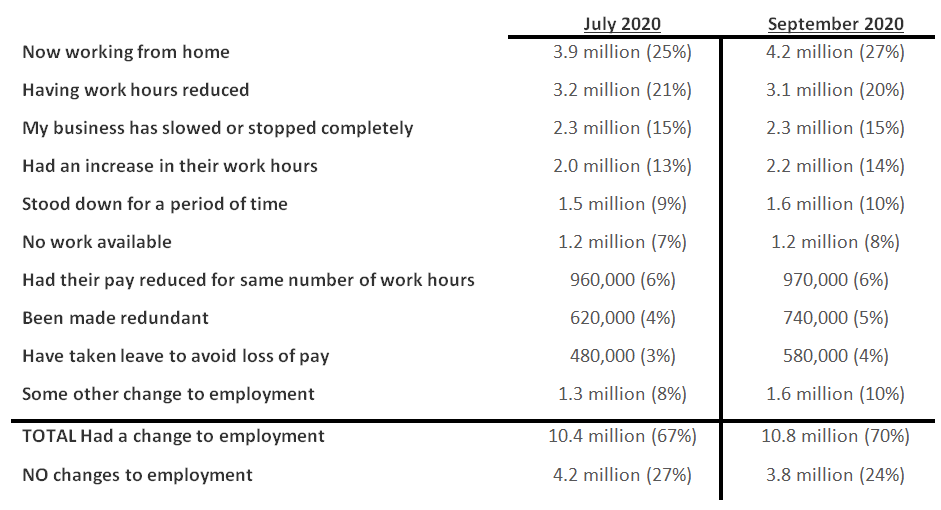
Only one in four working Australians are unaffected by shifts in the employment market

Seven in 10 workers in Australia experienced one or more changes to their employment status as a result of COVID-19. Work disruptions rose in September, data from Roy Morgan showed.
A total of 10.8 million Australians – or 70% of the working population – had their work affected by the end of September, compared to 10.4 million or 67% of workers back in July. In contrast, only 3.8 million (24%) remained unaffected by shifts in the employment market.
Read more: Unemployment figures released
“Several indicators regarding the employment impact of the coronavirus have increased between July and September including ‘being stood down for a period of time’, ‘having pay reduced for the same number of work hours’, ‘being made redundant’ and ‘taking leave to avoid loss of pay,’” said Roy Morgan CEO Michele Levine.
The most common arrangement for workers during the pandemic is the shift to telecommuting (27%), followed by a reduction in work hours (20%).

In September, a total of 4.2 million employees across the country continued working from home despite the fact that some areas had virtually eliminated the virus from their communities.
Victoria, which was on hard lockdown throughout September, was the most severely hit, with four in five workers in the state having seen their work affected by the pandemic. This was followed by New South Wales (69%) and Tasmania (68%).
“Last week marked the end of Victoria’s long second lockdown which ran for nearly 16 weeks from Thursday July 9 until Wednesday October 28,” Levine said. “However, the end of the lockdown doesn’t mean a return to normality for Victorians, or even for other Australians living in states that continue to keep their borders largely closed to Victorians.”
Read more: Over 600K workers aged 35+ unemployed
By industry, recreation and personal services have faced widespread disruption. Almost nine in 10 workers (89%) were affected by restrictions on leisure and social interaction in public.
Other sectors experiencing employment changes include:
“The employment impacts of the coronavirus are not evenly shared across different industries,” Levine said. “The most impacted industry is recreation and personal which generally relies on close human contact.”